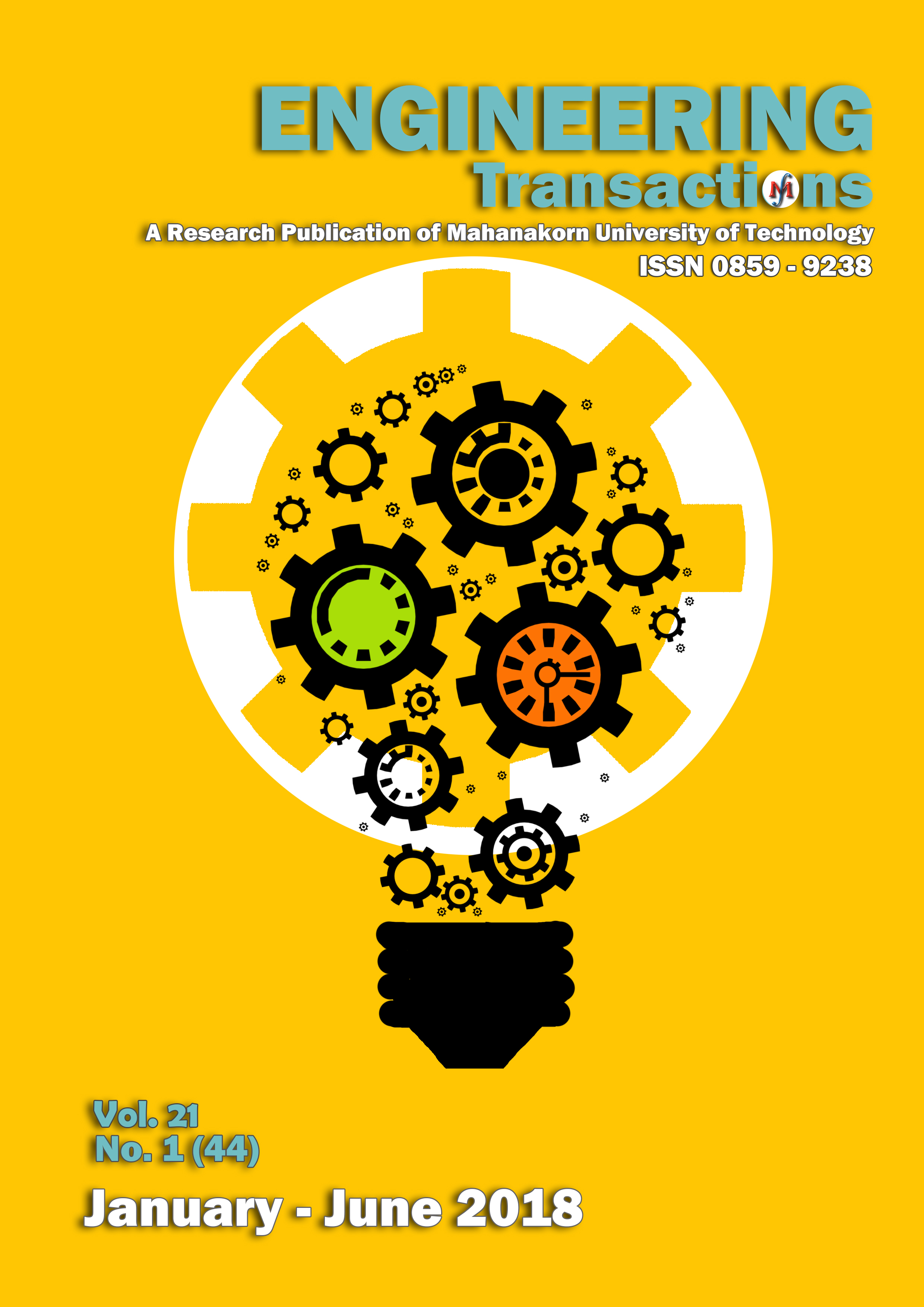การปรับปรุงสมรรถนะ BER สำหรับระบบเชื่อมโยงขาลงแบบ OFDM
Main Article Content
บทคัดย่อ
บทความนี้นำเสนอเทคนิคในการปรับปรุงสมรรถนะ BER ของระบบเชื่อมโยงขาลง OFDM แบบ MISO โดยเทคนิคการชักตัวอย่างเกินในโดเมนเวลาและการขยายขนาดของเมตริกซ์ DFT ด้วยคลื่นพาห์ย่อยที่มีความถี่ตั้งฉากกันในบล็อกของ OFDM Demodulator ได้ถูกนำมาประยุกต์ใช้กับทางด้านเครื่องรับของโทรศัพท์เคลื่อนที่ จากผลการวิเคราะห์จะพบว่า ไดเวอร์ซิตีเกนของเครื่องรับที่นำเสนอจะได้รับมาจากผลคูณของจำนวนวิถี (L) จำนวของสายอากาศที่ติดตั้งทางฝั่งส่ง (Mt) และจำนวนตัวประกอบของการชักตัวอย่างเกิน(Z) ผลการจำลองการทำงานแสดงให้เห็นว่า สมรรถนะ BER ที่ได้รับมาจากเครื่องรับที่นำเสนอให้ผลที่ดีกว่าเครื่องรับ MISO แบบชักตัวอย่างเกินและเครื่องรับ MIMO แบบมาตรฐาน ภายใต้ช่องสัญญาณคลื่นหลายวิถีเฟดดิงที่มีความเร็วของดอปเพลอร์สูง
Article Details
บทความนี้เป็นลิขสิทธิ์ของวารสาร Engineering Transactions คณะวิศวกรรมศาสตร์และเทคโนโลยี มหาวิทยาลัยเทคโนโลยีมหานคร
เอกสารอ้างอิง
Pekka Pirinen, “A brief overview of 5G research activeties,” in Proc. 5G for Ubiquitous Connectivity (5GU) 2014, pp. 1-6, 2014.
Petar Popovski, Volker Braun and Hans-Peter Mayer, “Deliverable D1.1 Scenarios, requirements and KPIs for 5G mobile and wireless system,” Tech. Rep., May 2013. [Online]. Available: http://publications.lib. chalmers.se/records/fulltext/213055/local_21305 5.pdf.
Cheng-Xiang Wang, “Cellular Architecture and Key Technologies for 5G Wireless Communication, Networks,” IEEE Communications Magazine, pp. 122-130, vol. 52, no. 2, February 2014.
F. G. Larsson, O. Edfors, F. Tufvesson and T. L. Marzetta, “Massive MIMO for next generation wireless systems,” IEEE Comm. Magazine, vol. 52, no. 2, pp. 186-195, February 2014.
3GPP TS 36.201 v8.3.0, “LTE physical layer – general description,” Release 8, April 2009.
Y. S. Lee and B. S. Seo, “OFDM receiver using oversampling with rational sampling ratios,” IEEE Trans. Consumer Electronics, vol. 55, no. 4, pp. 1765-1770, 2009.
X. Zhang and E. Chen, “Single-carrier frequency-domain equalization based on frequency-domain oversampling,” IEEE Comm. Letters, vol. 16, no. 1, pp. 24-26, January 2012.
Q. Shi and Y. Karasawa, “Frequency-domain oversampling for OFDM systems: Exploiting inter-carrier interference and multipath diversity,” in Proc. ISCIT 2009, pp. 1097-1101, December 2009.
Z. C. J. Wang, C. Zhang and J. Song, “Time-domain oversampled receiver for OFDM in underwater acoustic communication,” in Proc. VTC 2014, pp. 1-5, December 2014
S. Phrompichai, “Increasing maximum achievable diversity of MISO downlink OFDM systems,” in Proc. ISPACS 2015, pp. 590-595, November 2015.
E. Lindskog, and A. Paulraj, “A transmit diversity scheme for channels with intersymbol interference,” in Proc. Int. Conf. on Commun., vol. 1, pp. 307-311, 2000.
S. M. Alamouti, “A simple transmit diversity technique for wireless communications mobile system,” Jour. Select Areas in Commun., vol. 16, no. 8, pp. 1451-1458, October 1998.
S. Siwamogsatham, M. P. Fitz, and J. Grimm, “A new view of performance analysis of transmit diversity schemes in correlated Rayleigh fading,” IEEE Inf. Theory, vol. 48, no. 4, pp. 950-956, April 2002.
Weifeng Su, Zoltan Safar, and K. J. Ray Liu, “Towards maximum achievable diversity in space, time, and frequency: performance analysis and code design,” IEEE Trans. Wireless Commun., vol. 4, no. 4, pp. 1847-1857, July 2005.
J. P. Kermoal, L. Schumacher, K. I. Pedersen, P. E. Mogensen and F. Frederiksen, “A Stochastic MIMO radio channel model with experimental validation,” IEEE Jour. on Selected Areas in Commun., vol. 20, no. 6, August 2002.


